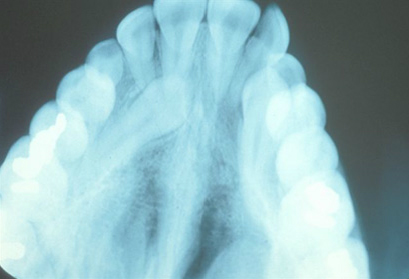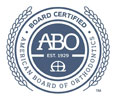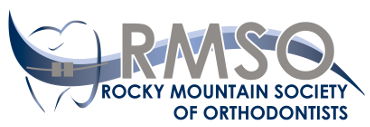Impacted & Missing Teeth
Impacted Teeth
Any tooth which either only partially erupts or does not erupt on time is said to be impacted. This is usually due to a lack if space but can also be from non-resorbing baby teeth, trauma, or fusion to the surrounding bone. Though the most common example of impacted teeth are the wisdom teeth (3rd molars), any tooth is susceptible to impaction. Once identified, It is important that the condition be corrected as early as possible in order to prevent a deeper impaction, damage to adjacent roots, or development of a more severe malocclusion.
Impactions must be corrected because they can lead to any or all of the following:
- Loss of good function
- Damage to the root structure of nearby teeth
- Loss of symmetry and affecting alignment of teeth
- Sinus cavity interference
- Transpositioning of adjacent teeth
- Loss of impacted tooth and/or loss of adjacent teeth

Orthodontic correction of impacted teeth?
Usually the impacted tooth is exposed over the course of a few months and brought into the correct position of the mouth. Correction of impacted teeth may involve a minor surgical procedure performed by an oral surgeon working closely with our practice. This will allow us to then guide eruption of the impacted tooth into proper position.
Missing Teeth
This is a dental condition where one or more teeth are congenitally missing. This is normally a result of genetics and will generally be seen throughout a family over generations. It is important that missing teeth are identified early so that appropriate action can be taken by the orthodontist to either close space as part of orthodontic treatment or maintain space for future replacement. Timing is important as missing teeth lead to adverse movement or ”drift” of adjacent teeth and over-eruption of opposing teeth even as early as age 8 to 10.. Additionally, bone in the area will atrophy over time making future replacement more difficult as the patient ages. This is one reason every child should be seen by an accredited orthodontist by age 6.
This problem should be corrected because it can:

- Leave gaps in a patient’s smile
- Cause a collapse in the dental arch form
- Less appealing smiles
- Cause loss of good tooth function
- Cause asymmetry in dental arches
How can missing teeth be orthodontically corrected?
Each case is unique and must be attended to on its own merits. Therefore, with respect to the nature of the problem, the space can either be enlarged for tooth replacement, or closed using braces. Tooth replacement options can be in the form of dental implants, or a bridge.





